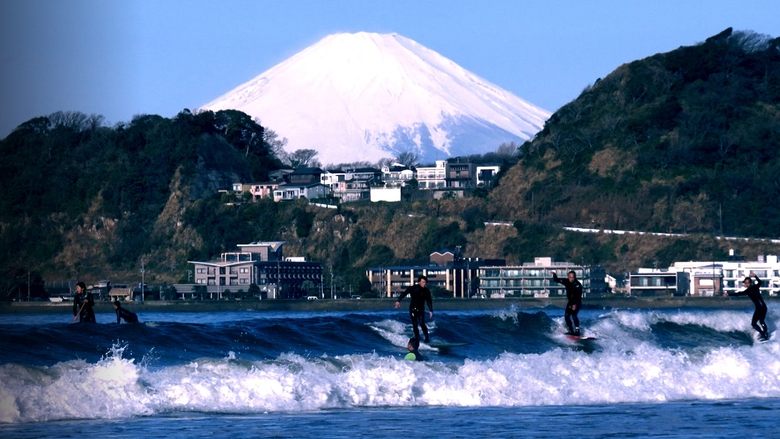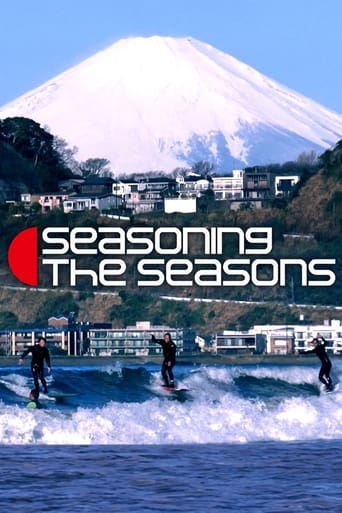
Trailer
Synopsis
This program visits places across Japan to introduce the charms of their local daily life and festivals fostered by the nation's long history.
Episode 32 : A Journey to Holy Places
December. 17,2014
For all sorts of occasions, Japanese people bow their heads and pray to nature. Whether it's the fulfillment of one's personal prayers, the calming of souls, someone else's happiness, or a peaceful distant future for a stranger, in each region, there are forms and subjects of prayer that have been passed down for many years. When one goes to these places, they visit 'sacred sites' of prayer where they can gain vigor for living. On our journey across the Japanese islands, from Okinawa to Hokkaido, we'll encounter all sorts of places of prayer.
Episode 31 : The Tottori Sand Dunes, Unity with Nature
December. 03,2014
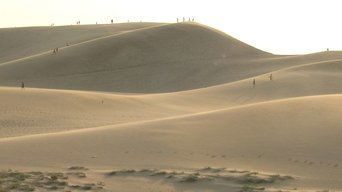
This is the Tottori Sand Dunes, a landscape of sand 16km long, built up over thousands of years by the winds of the Sea of Japan. Designated as a national natural treasure, every year 1.2 million visitors come to admire the spectacular rolling sand landscape. The changing lights and seasons lend various appearances to the sand dunes. The wind that brings beauty to the dunes blow mercilessly, wanting to cover everything with the sand. Locals have lived here trying to live off the dry land, while protecting their fields and homes from sandstorms. In this episode of Seasoning the Seasons, we look at the story of people who have loved the sand, despite the difficulty and threat it brings.
Episode 30 : Beppu: Exploring the Exciting Hot Springs
November. 19,2014
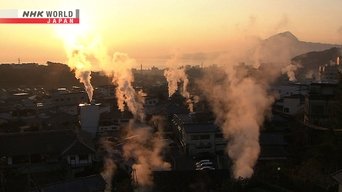
Beppu is Japan's leading hot spring town, both in terms of volume of water flow and the number of different spas. Due to the rising vapors and bubbling water, the area was once referred to as "hell", but over the generations local people used their imagination and initiative to create a spa heaven. 8 of the town's spas are particularly famous, and each is steeped in its own culture. We experienced the wealth of Beppu's healing waters.
Episode 29 : Kamo River: The Waterway that Created Kyoto
November. 12,2014

The Kamo River runs through one of Japan's most famous tourist destinations, Kyoto, which has a population of 1.5 million people. Even now, each season, the lives of the people of Kyoto are intertwined with the river. The river's water nurtures Kyoto's unique vegetables, and restaurants serve fish caught within it. Its water is still being used for purification at a shrine with 1,500 years of history. We take a look at the many faces of the Kamo River as well as the people who love it and live with it.
Episode 28 : Crossing the Amagi Pass
November. 05,2014
Izu Peninsula is located approximately 100km to the southwest of Tokyo. Dividing the peninsula, which juts into the Pacific Ocean into the north and south, is the "Amagi Goe", a single mountain pass. It used to take people one whole day to walk over this pass. Passing over the Amagi still stirs up emotions of the traveler in the hearts of the Japanese. Examples of this can be seen in "The Izu Dancer", an early short story by Nobel Prize-winning writer Yasunari Kawabata, and a popular karaoke song titled "Amagi Goe". This pass was once a harsh place that could only be crossed on foot. Sometimes, with a sense of longing... There are people who once passed over the Amagi, and people who are about to. In this episode of Seasoning the Seasons, we look into the emotions of those travelers, together with the beautiful scenery of the pass. Land of Fire and Water
Episode 27 : Aso: Life in the Caldera
October. 15,2014

Aso is a vast caldera - the largest in Japan. There, people live together with an active volcano. They revere and pray to the volcano, which has created such awe-inspiring scenery. Spring, flames engulf the grassy fields of Aso. From the blackened earth, new shoots of green emerge, and are grazed on by cows. The people have passed down the blessings of nature and the wisdom to live with a volcano from generation to generation without interruption. This is the story of a land of fire and water, and of the people who live there.
Episode 26 : Japan's Historic Tramways
October. 08,2014
Trams still run in numerous Japanese cities and are very popular with the public. Japan's first trams began operating in Kyoto, in 1895. At their peak, Japan's tramways reached a total length of 1500km, but increased private car ownership and the replacement of tramways with bus routes has left lines in just 17 cities covering around 200km. These tramways remain an important part of the neighborhoods they serve, evolving as the cities grow and change. The trams carry people's hopes and dreams, and act as a stage for scenes of meeting and parting.
Episode 25 : On a Moonlit Night...
October. 01,2014
The Japanese have admired the moon, which waxes and wanes over 30 days, and by giving it nostalgic names. Until 1872 the Japan based their lives on the lunar calendar, which is based on the phases of the moon. At the time, it is said that people could tell what day it was by looking at the shape of the moon. Even today, traditional customs based on the lunar calendar remain in the ancient capital of Kyoto, as well as in Okinawa where people live with the sea. In this episode of Seasoning the Seasons, we take a close look at people who still use the moon as their calendar.
Episode 24 : Travelogue of Mackerel Road
September. 10,2014
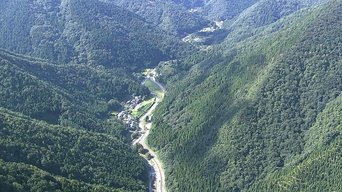
Mackerel Road connects Wakasa, which overlooks the Sea of Japan, and Kyoto. Wakasa, located in Fukui Prefecture, has a sawtooth-shaped coastline, and is a treasure trove of excellent seafood. The region, known as a land of food, has been offering up its cuisine to the emperor since the 7th century. In the 17th century, the mackerel transported to the capital from Wakasa supported the capital's food culture through dishes like mackerel sushi, an essential part of summer festivals. It's said that by the time the mackerel arrived in Kyoto, it was at just the right level of saltiness. We visit Mackerel Road, which winds through beautiful mountain villages, connects people, and has passed along both culture and customs.
Episode 23 : Kawagoe: Keeping Urbane Traditions Alive
September. 03,2014
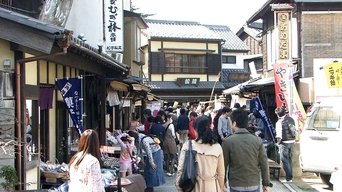
The town of Kawagoe, which lies just 30km northwest of central Tokyo, is still heavily influenced by the merchant culture of Japan's feudal period when Tokyo was known as Edo. In modern times, Kawagoe serves as a dormitory town for commuters to Tokyo, but the town still holds on to its traditional roots. We visit Kawagoe, exploring its culture, history and the lives of local people.
Episode 22 : Japanese Yokai: Ghosts, Goblins or Ghouls?
August. 13,2014
The Japanese have been living in a world inhabited by "Yokai", paranormal beings or phenomena that cannot be explained with common knowledge. Even today, there are legends and eyewitnesses that tell of Yokai. Yokai are said to be manifestations of the view on nature, life and death, and the world of the Japanese throughout history. Although life for the modern Japanese has changed, the image of the collective "spirit" of Japanese nostalgia lives on in tales of the Yokai. In this episode, we go on a journey looking for Yokai, mythical beings that dwell in the dark corners of the Japanese psyche.
Episode 21 : Nagasaki: Hills and Exotic Atmosphere
August. 06,2014
Nagasaki, on Japan's southern island of Kyushu. Interactions with foreign nations have been a feature of this place since long ago, absorbing aspects of the cultures of Portugal, the Netherlands and China. This is the story of the people of Nagasaki, who have integrated the cultures of faraway lands but have also overcome a very difficult history.
Episode 20 : Kujukuri: The Endless Beach
July. 09,2014
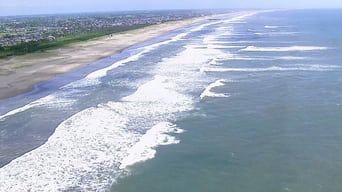
Just over an hour away from Tokyo the beautiful beach of Kujukuri stretches some 60km along Japan's Pacific coast. Villages along the beach grew prosperous through fishing from the shore for Japanese sardines. These days, fishermen go out into the bay in small boats, using nets up to 1,000m long to chase the anchovy shoals. A single one of these nets can collect up to 40 tons of fish, making the sardine fisheries of Kujukuri-hama Japan's largest catch.
Episode 19 : Shinsekai, Osaka: A Town Guarded by a Tower
July. 02,2014
This is the story of "Tsutenkaku", the symbolic tower of Osaka, and the town of "Shinsekai" that lies at its foot. Development of this region began about 100 years ago. The town of Shinsekai was established when the Tsutenkaku tower, modeled after the Eiffel Tower, was built, and has been attracting crowds as a "paradise of the masses". While the tourists flock here with the boom in Kushikatsu in recent years, old-fashioned standing-room-only bars continue to cater to their regulars with good old service with a human touch. Down to earth and warm-hearted service. This is a "paradise of the masses" where everyone can have fun inexpensively. Scenes of Shinsekai, filled with people who love this town, invites the viewer into the deeper side of Osaka.
Episode 18 : Strolling the Paths of Onomichi
June. 25,2014
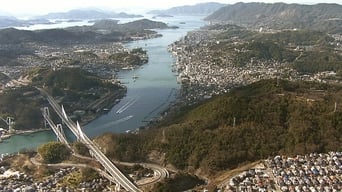
Onomichi is a town of hills and pathways, situated along a 200meter wide strait where waterways of the Inland Sea pass through. With the water so close, few flat areas are available, and the town grew on steep hillsides, spreading narrow paths in the process. Hilly byways where cars can't pass became places where people spend time and enjoy one another's company. Sounds of activity come from the houses, and fragrances waft through the air. Though life on a hillside can be inconvenient, people enjoy strong ties with their neighbors, and it's said that many young people move there to enjoy the lifestyle. This is the story of Onomichi, seen from its hillsides and byways.
Episode 17 : Karuizawa: A Fleeting Summer
June. 18,2014
Karuizawa, which sits at an altitude of 1,000 meters, was developed as a summer resort after a foreign missionary built his summer cottage there more than a century ago. Other missionaries and moneyed Japanese soon followed, turning Karuizawa into the place to be in summer. Karuizawa continues to enjoy its status is one of the world's leading summer resorts and a destination of choice for millions of Japanese travelers.
Episode 16 : The Islands of Nagasaki
June. 11,2014
The nation of Japan is made up of many islands, numbering some 6800 in total. Of these, 971 islands are located near Nagasaki on the western edge of Japan. Since ancient times, these interspersed islands have prospered as a key point of trade with China, Korea, Portugal and the Netherlands. Customs and cultures unknown to Japan have been brought about through these islands. While being ahead of the times through the exchanges with the Asian continent, the islands of Nagasaki have at times also been a time capsule of the times, with its own unique culture taking root. As we examine these islands, we begin to see the history and the origin of Japan.
Episode 15 : Ayu: Treasures of the River
June. 04,2014
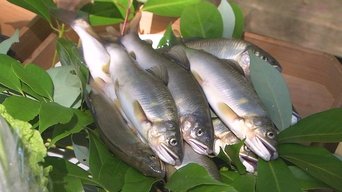
When summer arrives, there is a fish that causes the hearts of fishermen to race with anticipation. It is the "Ayu", or "sweetfish" - little known outside Asia, but a key part of summer in Japan. Its scent has led people to call it "the fragrant fish", and the soft flavor of its meat holds a delicate sweetness. Japanese people have been captivated by Ayu. In the spring, the fish swims upstream from the ocean, and in the summer it stays near rocks, eating algae and growing larger. In the fall, it goes downstream to lay eggs, and its short life then comes to a close. Its birth and death both happen in the space of just 4 seasons. Ayu is in the hearts of the Japanese together with river memories. We travel Japan to learn more about it.
Episode 14 : Oze: A Mountain Marshland
May. 21,2014
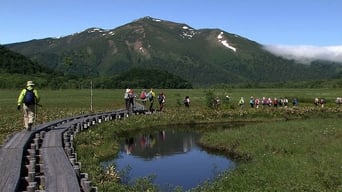
Ozegahara, at an altitude of 1400m, is the largest and highest wetland on Japan's main island of Honshu. Located in a National Park, the rare ecosystem of Oze is also a Special Protection Area. Every year, around 300,000 hikers flock to Oze. The unique marshlands are home to around 300 species of grasses and flowering plants, including the white skunk cabbage. In Oze, spring, summer and autumn are compressed into the 5 months between mid-May and mid-October. During that brief period, plants bud, flower and bear fruit. We explore the beauty of Oze's 4 seasons.
Episode 13 : Sado Island: Into the Mystic Dreams
May. 14,2014
The stage for this episode of Seasons of Seasons is the largest remote island in the Sea of Japan, Sado, which lies beyond the rough seas. This island was feared as "the end of this world where ogres live" for more than a thousand years. Sado started to become an "attractive island" in the Edo period, when a gold mine began to draw people. Various cultures brought into the island by shipping in the Sea of Japan, coupled with the harsh climate of Sado, evolved into a form of its own, and are alive in the islanders' lives today. The surging waves often washed in and trap the times, and as such the island still embodies cultures of "old Japan" no longer seen in other parts of the country.
Episode 12 : Kirishima: A Town Thriving on Volcanic Mountains
May. 07,2014

Kirishima, a group of 20 mountains in the south of Kyushu. It is a volcanic area that was a central location in Japan's creation myth. Its name, meaning 'fog island', refers to the way that the peaks look like an island rising above the clouds. Its high rate of rainfall creates springs and hot springs for the towns around it, and the volcanic ash it releases helps grow sweet potatoes that have fostered a shochu alcohol culture. As they receive the bounty of the mountains, the people there have created their own unique customs, and carved out their own way of living in harmony with an unforgiving environment. An old mountain guide struggles with volcanic ash as he seeks to reopen the area for tourism and mountain climbing. The people here's love for the region has no limits. Even though there are few jobs for the younger generation, they don't want to leave, and even those who do tend to come back.
Episode 11 : Hakodate: The Storied History of a Port Town
April. 16,2014
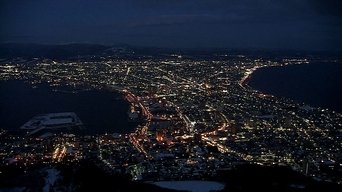
Travelers to Japan's northernmost island of Hokkaido often first arrive in Hakodate, a port town that attracts 4 million visitors a year. The city is best known for its Million-Dollar Night View. The bright lights look beautiful surrounded by the jet black ocean. The view, very popular with couples, is a symbol of the city. Hakodate prospered as the first port in Japan fully open to the outside world and we explore the city's romance together with the people who call it home.
Episode 10 : Hozenji: The Sentimental Alley of Osaka
April. 09,2014
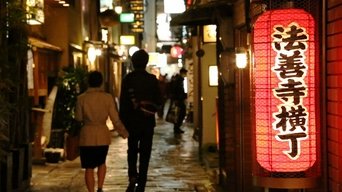
Hozenji lies just behind Dotonbori, Osaka's bustling downtown area with its dazzling neon lights. This is where you can find a "deeper side" of Osaka. A confined temple known for Mizukake Fudoson, a local deity. About 60 one-of-a-kind restaurants and bars line a cobbled alleyway. It is said that this town started in the Edo period, with stalls and teahouses catering to pilgrims going to the Hozenji Temple. Regular barflies come out nightly to their favorite watering holes. Young cooks who do their training in a sanctuary for chefs. We take a look at traditional Osaka cuisine. Welcome to Hozenji, a town where people live a life of esprit.
Episode 9 : Kyoto: The Enigmatic Entertainers of Gion
April. 02,2014
In Higashiyama, Kyoto, Gion evolved as the district in front of the Yasaka Shrine gates, and now has more than 300 years of history. Its narrow streets are lined with over 50 old-style teahouses. At twilight, beautifully dressed geiko and maiko walk towards their parlors. It is a sought-after destination for countless tourists foreign and domestic, but the teahouses where the geiko and maiko entertain customers only admit people with introductions. There is almost never an opportunity to see the ladies at their finest. For this program, we spent many hours capturing this little-known world. The graceful and captivating dances for customers, and the daily lives of the geiko and maiko, who constantly refine their art in a world of rigid formality. How do they feel as they live in this town? This is the story of the women who live in the geisha quarter, Gion.
Episode 8 : Spring in Tohoku
March. 19,2014
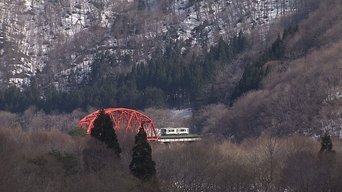
Cherry Blossoms... People wait eagerly for their blossoms, love the famous scenes of cherry trees in bloom, sense the transience of things as the petals flutter down and then look forward to them just as eagerly again the following spring. Why are the Japanese so attached to these flowers which announce the coming of spring? A man is so enthusiastic that he gives up his job to follow the blossoms on their half-year, south-north path up the archipelago. A thousand-year-old cherry tree, worshipped as a tutelary god, has been treasured over many generations in a humble mountain village. And so it goes on... Every Japanese person has a special, personal recollection of the blossoms. From when the first trees bloom in Okinawa until the last flower in Hokkaido, we follow the cherry blossom front as it moves north across Japan, visiting famous viewing sites in each prefecture. We hear, too, the stories of Japanese and their cherry blossoms along the way.
Episode 7 : Winter in Tohoku
March. 07,2014
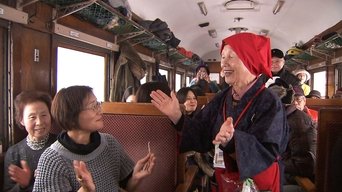
In Tohoku, the winter is long and harsh. People cannot avoid the cold weather, they simply learn to survive it. Our program shows how the region's people cope with the deep snow, keep alive traditional methods of preserving food, and spend the colder months working with their hands. The heavy snow blocks people in during winter, but when the spring comes it becomes a plentiful source of meltwater, supporting local agriculture. Since time long past, the people of Tohoku have lived quietly through the winter, in harmony with the natural environment.
Episode 6 : Modern Architecture: Giving Form to Dreams
February. 12,2014

When the Meiji era started, Japan advanced forward to build itself into a modern state. It was architecture that gave form to that enthusiasm. Schools, government offices and houses modeled after the West. In each one nested the dreams and ideals of the architects and the people who lived in them. Soon many architectural masterpieces with a style unique to Japan were produced. In this episode we take a look at the architectural masterpieces and the stories of those who built them throughout the Meiji, Taisho and Showa eras, and shed light on the traces of the dreams of the Japanese.
Episode 5 : Chichibu - Home of the Mountain Gods and Festivals
February. 05,2014
In the west of Saitama Prefecture, nestled among 2,000 meter tall mountains, lies Chichibu. Whether entering or leaving, you must cross mountains and passes. Within the looming mountains, in a small basin, lies a place with unique culture and customs, said to hold festivals more than 300 times a year. 10 million people visit Chichibu each year. Though it's just 80 kilometers from Tokyo, you wouldn't know it from entering its surreal environment. We pass the beauty of this world along to you through dazzling footage.
Episode 4 : Echizen - Taste of Winter
January. 22,2014
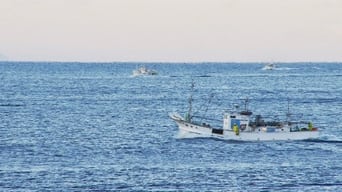
Located 100km north of Kyoto, the region of Echizen faces the Sea of Japan. Long and cold winters come to Echizen, but winter is also the season for much delicious cuisine. The quintessential taste of winter in Echizen is the "Echizen Crab". People get passionate about this particular crab. Only male snow crabs landed in this region are given the title of Echizen Crab. We take a look at a number of delicious foods only available in Echizen during winter. Much enthusiasm surrounds these unique local gastronomical delights.
Episode 3 : Ekiben - A Box of Flavor and Feeling
January. 15,2014

When going on a trip, packing a lunch box to take was the standard. In 1885, the first lunch box was sold at a train station. Called an "ekiben", there are now all kinds of them sold in stations all over Japan. The contents of the small ekiben lunch box reflect a place and a time, and are filled with the flavors of that region, the emotions of the person who made it, and the memories of a journey. We look at both the ekiben, much loved by Japanese people, and at a wonderful ekiben culture.
Episode 2 : Udon Noodles - A Wheat Delicacy
January. 08,2014
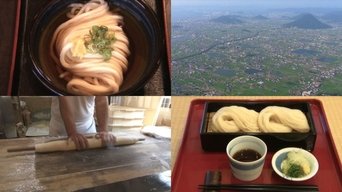
Udon noodles are loved in Japan as an easy, tasty, everyday dish. In Japan, farming centers on rice, but throughout Japan's history, various other cereals have also been harvested. During the winter, when there was no rice farming to do, farmers allowed themselves a little luxury by pounding wheat to make udon. Today, udon has become a delicious, satisfying everyday dish. We look back through Japanese history, tracing the story of the unique know-how and preparatory techniques behind this delicious dish.
Episode 1 : Izumo - Abode of the Gods
January. 03,2014
Izumo is an abode of gods, home to many of the deities that appear in Japan's ancient legends. Japan's oldest history books, which mix legends and history, state that Izumo is the location of Japan's birth. Izumo is also home to various aspects of Japanese culture. With footage from this sacred place of mystery and romance, we show you the beauty of Izumo.
Seasons
Similar titles

Japanology Plus
Host Peter Barakan delves into various aspects of Japanese culture; exploring practices, history, and modern innovations in such areas as ramen, rice, sushi, geisha, bonsai, and so much more. Local experts discuss their passions at fascinating length, and American Japanophile Matt Alt experiences the food, practices, and cultures in each episode in depth. Viewers will finish each half hour episode with a new understanding of an area of Japanese life through demonstrative videos and explanations, all delivered respectfully and true to the Japanese way of life.

Africa Rising with Afua Hirsch
Africa on its own terms and in full voice - across Morocco, Nigeria and South Africa. Uncovering the energy and ambition of creatives reinventing African music, fashion and film.

Sahara with Michael Palin
In this four-part BBC documentary, former Monty Python funnyman and renowned globe-trotter Michael Palin sets off from Gibraltar to travel across the Sahara, his witty humor downplaying the hardships he faces along the arduous journey. He travels to Morocco, Mauritania, Mali and beyond, across some of the harshest terrain on the planet.

Italy's Invisible Cities
Using the latest 3D scanning technology, Alexander Armstrong and Dr Michael Scott uncover the hidden history of Italian civilisation and city life.

Journeys in Japan
Journeys in Japan provides an eye-opening look at the many unique places to visit in Japan. English-speaking visitors travel the length of the country, exploring the culture, meeting the local people, visiting historic sites and offering travel hints rarely found in guidebooks.
Related

Netflix
Fool Me Once
When ex-soldier Maya sees her murdered husband on a secret nanny cam, she uncovers a deadly conspiracy that stretches deep into the past.

The Crowded Room
In 1979 Manhattan, a young man is arrested for a shocking crime — and an unlikely investigator must solve the mystery behind it.

Prime Video
Outer Range
A rancher fighting for his land and family stumbles upon an unfathomable mystery at the edge of Wyoming’s wilderness, forcing a confrontation with the Unknown in ways both intimate and cosmic in the untamable American West.

Prehistoric Planet
Experience the wonders of our world like never before in this epic series from Jon Favreau and the producers of Planet Earth. Travel back 66 million years to when majestic dinosaurs and extraordinary creatures roamed the lands, seas, and skies.

Netflix
She-Ra and the Princesses of Power
In this reboot of the '80s series, a magic sword transforms an orphan girl into warrior She-Ra, who unites a rebellion to fight against evil.

Disney+
Ahsoka
Former Jedi Knight Ahsoka Tano investigates an emerging threat to a vulnerable galaxy.

HULU
What We Do in the Shadows
A documentary-style look into the daily (or rather, nightly) lives of a group of vampires in Staten Island who have “lived” together for hundreds and hundreds of years.
Top Streaming TV Show
#1

Grey's Anatomy
March. 27,2005
7.6
#2

A Teacher
November. 10,2020
6.9
#3

The Mandalorian
November. 12,2019
8.7
#4

Game of Thrones
April. 17,2011
9.2
#5

Station 19
March. 22,2018
7
#6

The Undoing
October. 25,2020
7.4
#7

Supernatural
September. 13,2005
8.4
#8

The Last Dance
April. 19,2020
9.1
#9

Euphoria
June. 16,2019
8.3
#10

Fear the Walking Dead
August. 23,2015
6.8

